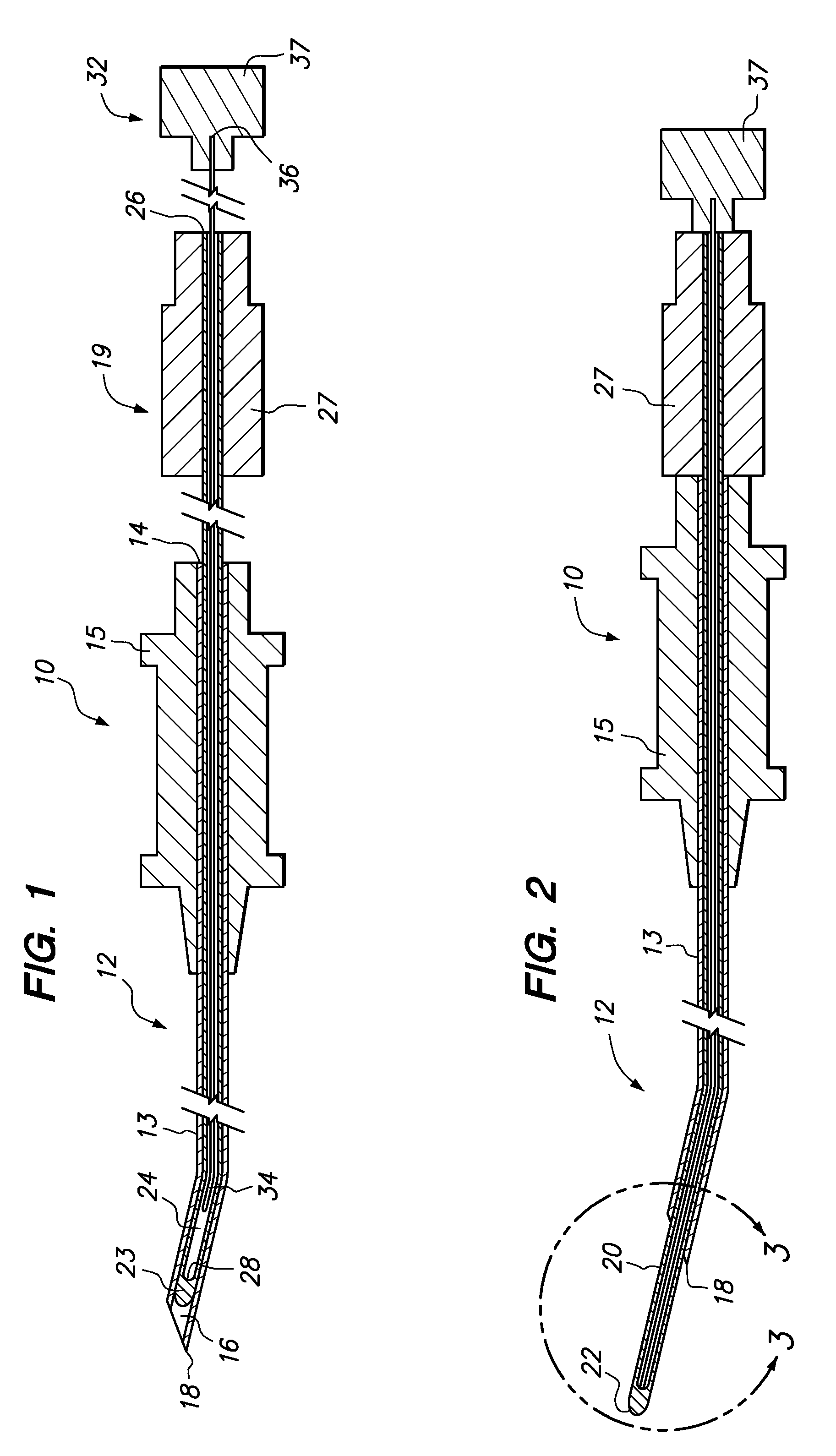High frequency epidural neuromodulation catheter for effectuating RF treatment in spinal canal and method of using same
a neuromodulation catheter and high-frequency technology, applied in the field of medical devices, can solve the problems of tissue to heat, thermal lesion of the medial branch nerve, worsening pain,
- Summary
- Abstract
- Description
- Claims
- Application Information
AI Technical Summary
Benefits of technology
Problems solved by technology
Method used
Image
Examples
Embodiment Construction
[0021]Referring now to the drawings, which are illustrative of one embodiment of the present invention only and are not for purposes of limiting the same, FIG. 1 shows a partially assembled catheter apparatus 10 constructed in accordance with the present invention. As shown in FIGS. 1 and 2, the catheter apparatus 10 includes a needle assembly 12 having an elongate needle 13. The needle 13 of the needle assembly 12 has an open proximal end 14 which is defined within one end of an enlarged needle hub 15 of the needle assembly 12, the needle 13 being partially disposed with the needle hub 15 in the manner shown in FIGS. 1 and 2. The needle hub 15 is configured to be easily graspable to allow for the insertion of the needle 13 of the needle assembly 12 to a desired treatment site, as will be described in more detail below. The needle 13 of the needle assembly 12 further includes a hollow lumen 16 and an open distal end 18. The distal end 18 of the needle 13 is itself defined by a sharp...
PUM
 Login to View More
Login to View More Abstract
Description
Claims
Application Information
 Login to View More
Login to View More - R&D
- Intellectual Property
- Life Sciences
- Materials
- Tech Scout
- Unparalleled Data Quality
- Higher Quality Content
- 60% Fewer Hallucinations
Browse by: Latest US Patents, China's latest patents, Technical Efficacy Thesaurus, Application Domain, Technology Topic, Popular Technical Reports.
© 2025 PatSnap. All rights reserved.Legal|Privacy policy|Modern Slavery Act Transparency Statement|Sitemap|About US| Contact US: help@patsnap.com



